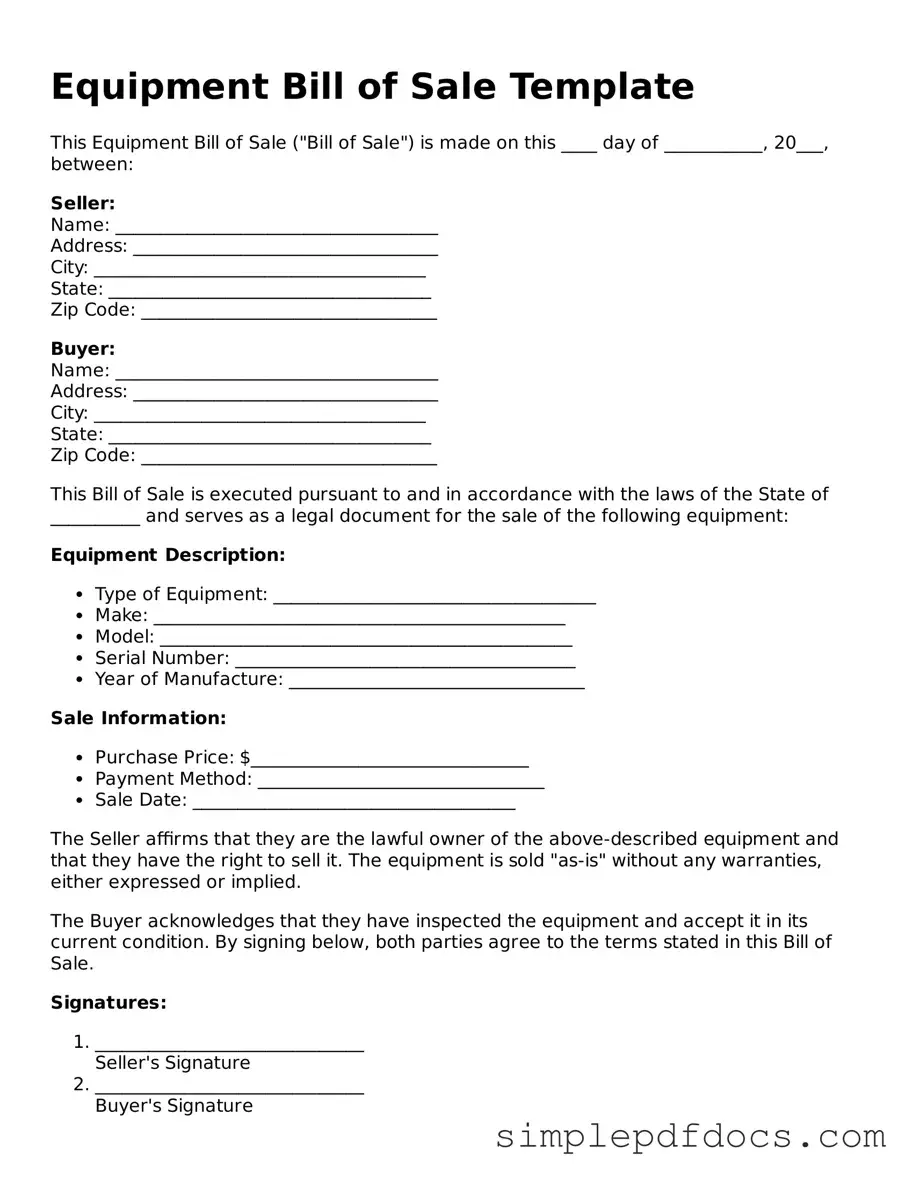When engaging in the buying or selling of equipment, a well-structured Equipment Bill of Sale form plays a crucial role in ensuring a smooth transaction. This document serves as a written record of the transfer of ownership from the seller to the buyer, detailing essential information about the equipment involved. Key elements typically included are the description of the equipment, its condition, and the purchase price. Additionally, the form often captures the names and contact details of both parties, as well as the date of the transaction. By documenting these vital aspects, the Equipment Bill of Sale not only protects the interests of both the buyer and seller but also provides legal evidence of the sale should any disputes arise in the future. It is important to understand that while this form is relatively straightforward, it carries significant implications for both parties, making it essential to complete it accurately and thoroughly.
